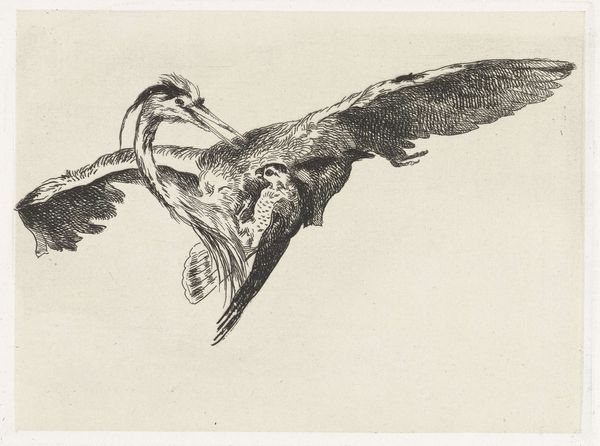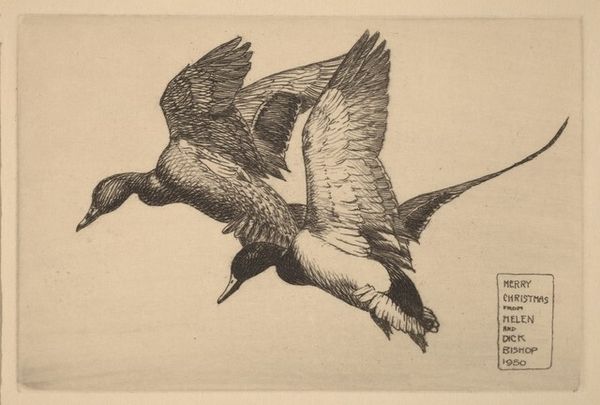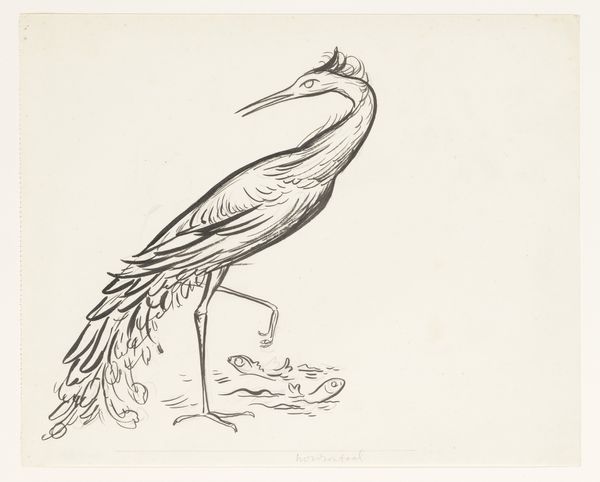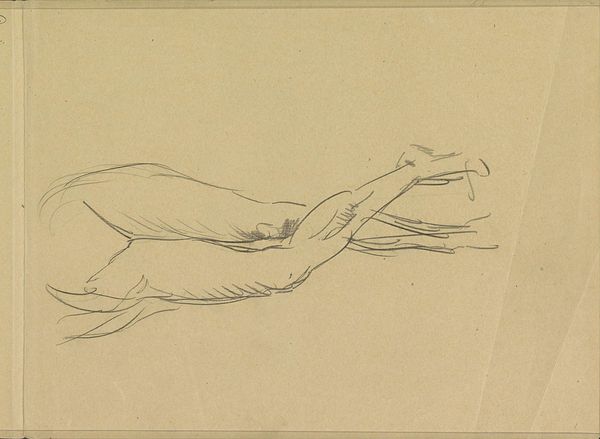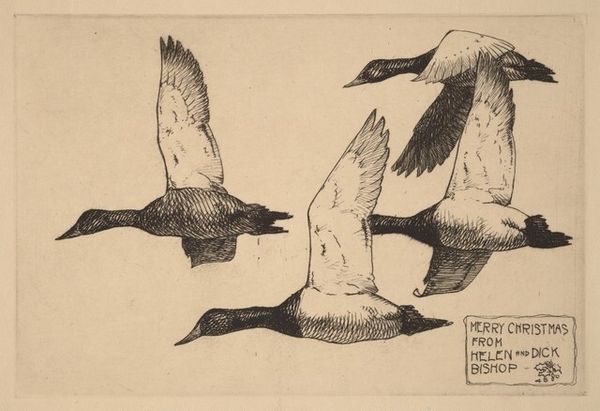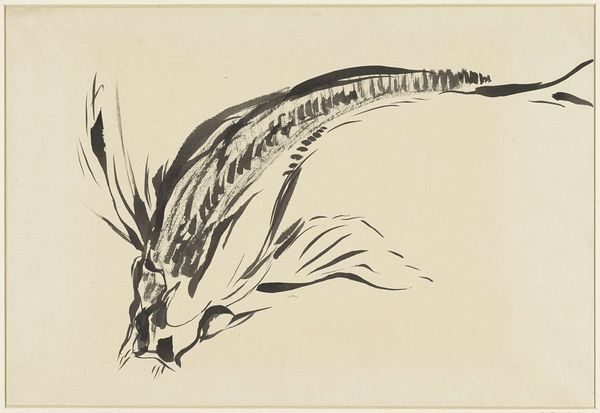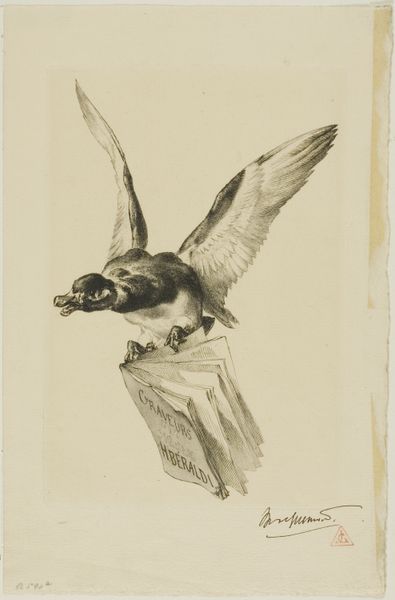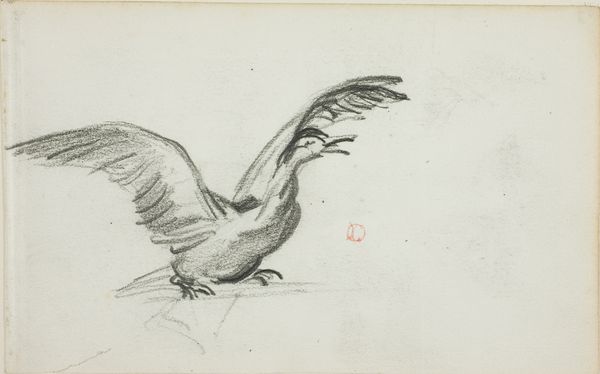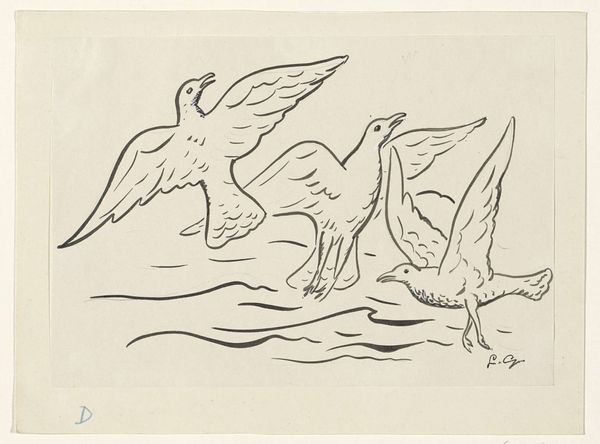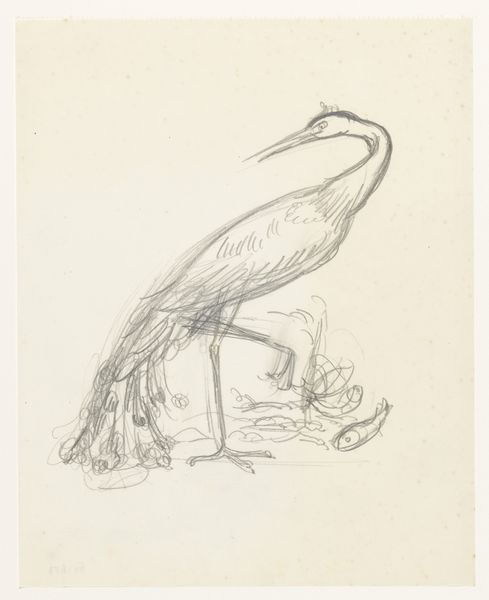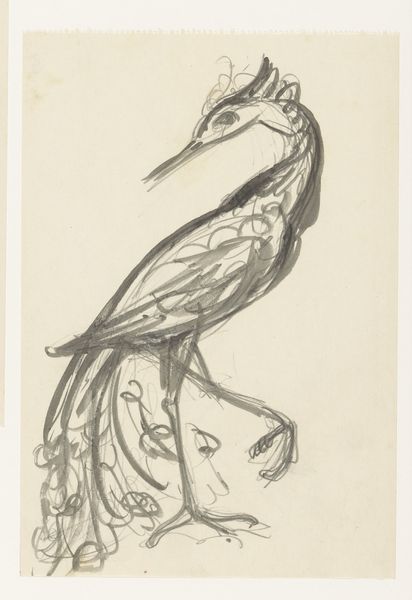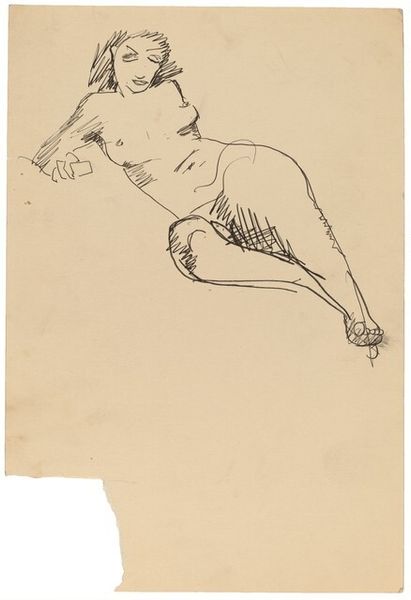
drawing, ink, pen
#
drawing
#
pencil sketch
#
figuration
#
ink
#
pen-ink sketch
#
line
#
pen
#
modernism
Dimensions: height 130 mm, width 162 mm
Copyright: Rijks Museum: Open Domain
Curator: Here we have "Flying Bird," a pen and ink drawing attributed to Leo Gestel, placing its creation sometime between 1891 and 1941. Editor: My immediate response is to the dynamism of it. The strong, confident lines create a wonderful sense of movement; you can almost feel the bird's wings pushing against the air. Curator: Indeed. Observe the interplay of light and shadow, achieved solely through the density and direction of the lines. Gestel masterfully uses hatching and cross-hatching to give volume and texture to the bird's form. Note how the areas of darkest ink concentrate towards the wingtips, directing the eye outward, reinforcing the impression of flight. Editor: And consider the sheer labor involved in producing this image. Each individual stroke painstakingly laid down with a pen. This wasn't a quick sketch with charcoal or pastel where you could smudge and blend. The final image represents a physical engagement, demanding planning and meticulous execution with the materials. One must appreciate the craft. Curator: Certainly. But the line itself transcends mere craft. The contour possesses an almost calligraphic quality, distilling the essence of birdness. One could argue that Gestel isn't just representing a bird but invoking the very idea of avian freedom. Its abstract rendering facilitates a greater imaginative involvement for the observer. Editor: Perhaps. But I keep coming back to the conditions of its creation. What paper was available to Gestel? What kind of ink? Who manufactured the pen he held? These all impose subtle material limits on Gestel’s capacity for expression, subtly directing his final artwork. Curator: A valid point, but let's not lose sight of the image itself, the relationship between form and meaning, the artist's decision to foreground line over detail. It's through these choices that Gestel communicates a profound and enduring vision. Editor: An enduring vision rooted, let us remember, in tangible materials, in specific processes of making, and located in a defined historical setting. All of which bring context and deeper understanding. Curator: A wonderful exchange, reminding us to appreciate both the intrinsic beauty and the socio-material complexities of art. Editor: Indeed, there's always more than meets the eye, isn’t there?
Comments
No comments
Be the first to comment and join the conversation on the ultimate creative platform.
